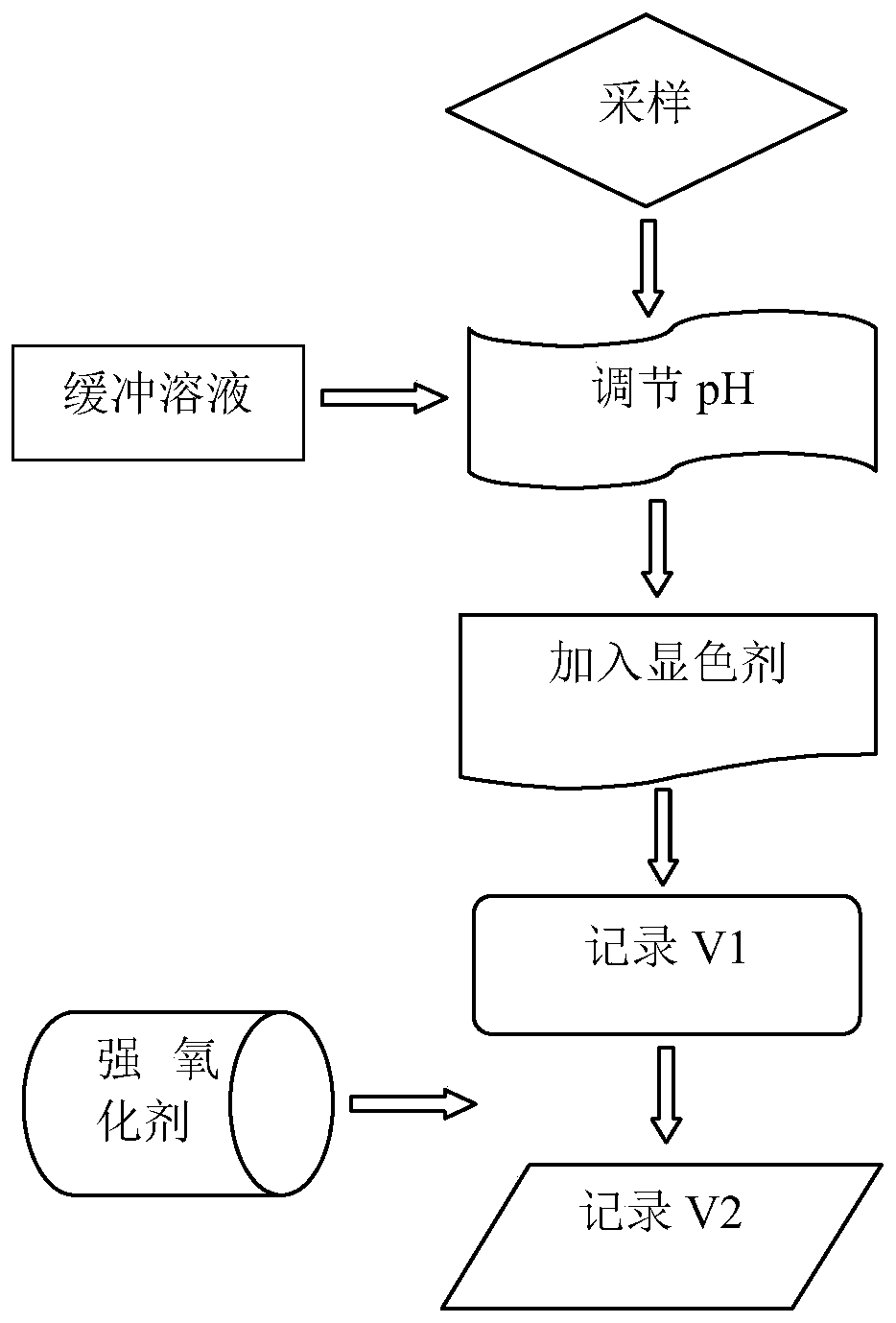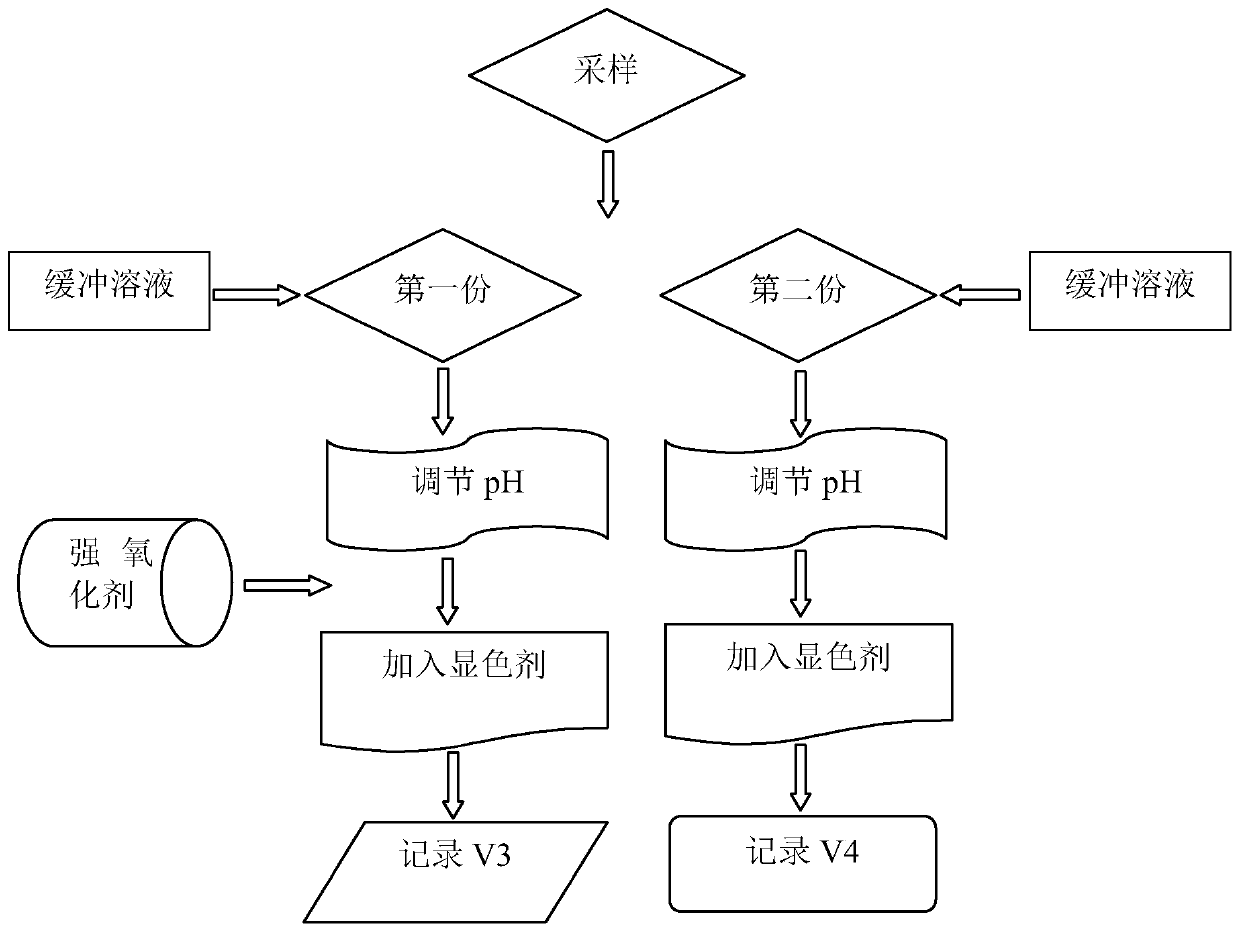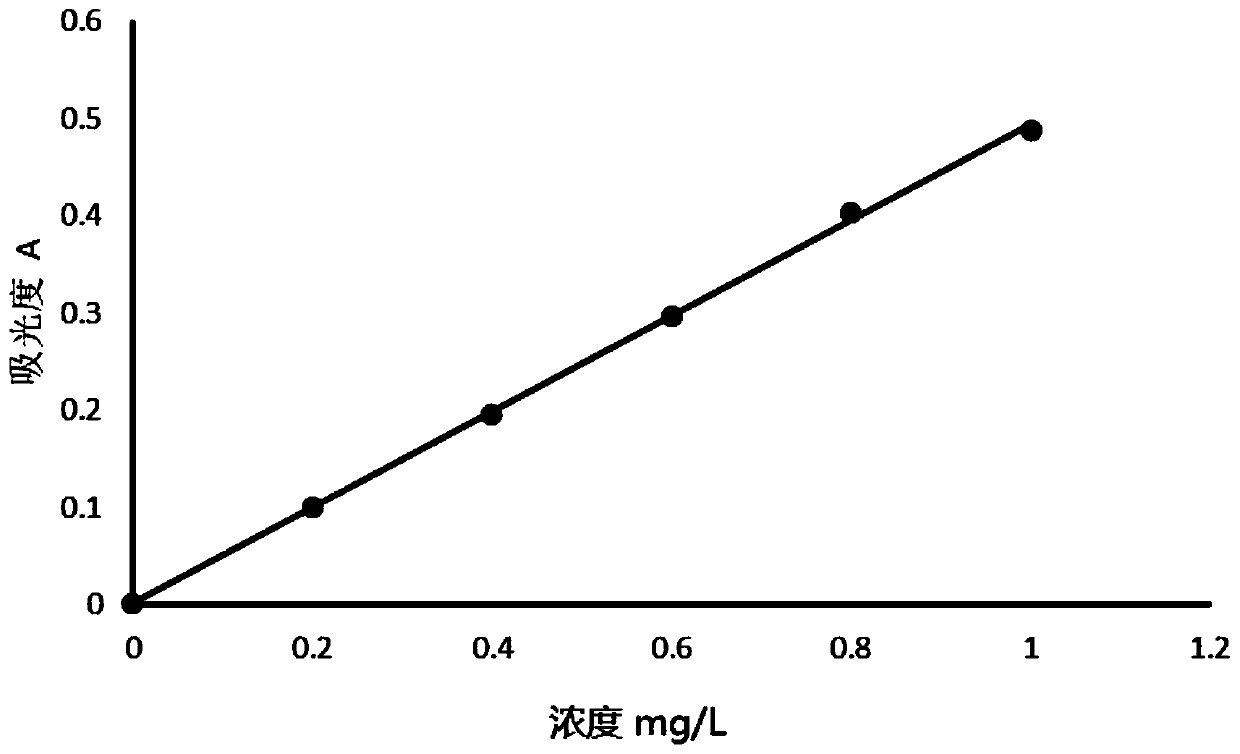Residual chlorine analysis method
An analysis method, the technology of residual chlorine, which is applied in the direction of analyzing the chemical reaction of the material, material analysis by observing the influence of the chemical indicator, color/spectral characteristic measurement, etc., can solve the inaccurate determination result of residual chlorine, etc. problems, to achieve the effects of low toxicity, improved reliability and accuracy, and low reagent consumption
- Summary
- Abstract
- Description
- Claims
- Application Information
AI Technical Summary
Problems solved by technology
Method used
Image
Examples
Embodiment 1
[0060] The analyzed sample was tap water.
[0061] Take 10ml of tap water sample to the detection pool of the automatic residual chlorine analyzer, slowly add 0.5mL of disodium hydrogen phosphate buffer solution, add 0.5ml of DPD sulfate chromogen solution, mix well to make the color develop completely, and record the absorbance signal at this time The value V1 is 0.3242, add 0.5mL of 0.5% sodium dichloroisocyanurate, and mix well to completely fade the generated red complex, and record the absorbance signal value V2 at this time as 0.1271.
[0062] Substitute the values of the measured results V1-V2 into the standard curve, and calculate the residual chlorine concentration of the tap water sample to be 0.397mg / L.
Embodiment 2
[0064] The analyzed sample was tap water.
[0065] Take 10ml of tap water sample to the detection tank of the automatic analyzer, slowly add 0.5ml of disodium hydrogen phosphate buffer solution, add 0.5% sodium dichloroisocyanurate 0.5mL, add 0.5ml DPD sulfate color reagent solution, mix well, record At this time, the absorbance signal value V3 is 0.1187,
[0066] After cleaning the instrument, take 10ml of tap water sample again to the detection pool of the automatic analyzer, slowly add 0.5ml of disodium hydrogen phosphate buffer solution, add 0.5ml of DPD sulfate chromogen solution, mix well to make the color develop completely, and record this time The absorbance signal value V4 is 0.3144,
[0067] The value of V4-V3 is substituted into the standard working curve, and the concentration of residual chlorine in the sample is calculated to be 0.394mg / L.
Embodiment 3
[0069] The analysis sample is a water sample with large turbidity and chromaticity. The yellow soil is used as the matrix, and the water sample is prepared with tap water. After mixing evenly, the measured turbidity is 148NTU.
[0070] Take 10ml of the above sample to the detection pool of the automatic residual chlorine analyzer, slowly add 0.5mL of disodium hydrogen phosphate buffer solution, add 0.5mL of 0.5% sodium dichloroisocyanurate, add 0.5ml of DPD sulfate color reagent solution, and mix well , record the absorbance signal value V5 at this time as 0.3426;
[0071] After cleaning the instrument, take 10ml of the above sample again to the detection pool of the automatic residual chlorine analyzer, slowly add 0.5 of disodium hydrogen phosphate buffer solution, add 0.5ml of DPD sulfate chromogen solution, mix well to make the color develop completely, record this When the absorbance signal value V6 is 0.4679;
[0072] Substitute the values of the measured results V6-V5...
PUM
 Login to View More
Login to View More Abstract
Description
Claims
Application Information
 Login to View More
Login to View More - Generate Ideas
- Intellectual Property
- Life Sciences
- Materials
- Tech Scout
- Unparalleled Data Quality
- Higher Quality Content
- 60% Fewer Hallucinations
Browse by: Latest US Patents, China's latest patents, Technical Efficacy Thesaurus, Application Domain, Technology Topic, Popular Technical Reports.
© 2025 PatSnap. All rights reserved.Legal|Privacy policy|Modern Slavery Act Transparency Statement|Sitemap|About US| Contact US: help@patsnap.com



